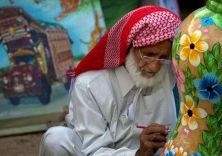Culture OF Khyber Pakhtunkhwa
Khyber Pakhtunkhwa , locally Pukhtunkhwa, previously known as the North-West Frontier Province and various other names, is one of the five provinces of Pakistan, located in the north-west of the country. It borders Afghanistan to the north-west,Gilgit-Baltistan to the north-east, Pakistan administered Kashmir to the east, the Federally Administered Tribal Areas (FATA) to the west and south and Punjab and the Islamabad Capital Territory to the south-east.
The main ethnic group in the province is the Pashtuns; other smaller ethnic groups include most notably the Hazarewals andChitralis. The principal languages are Pashto, locally referred to as Pukhto.
Different Places of Khyber Pakhtunkhwa:
SWAT VALLEY:

Swat river:

Lake Saif-ul-Malook:

Ansoo Lake:

Culture:
Pashtun culture is based on Pashtunwali, which is an ancient way of life, as well as speaking of the Pashto language and wearing Pashtun dress. The culture of the Pashtun people is highlighted since at least the time ofHerodotus (484-425 BC) or Alexander the Great, when he explored the Afghanistan and Pakistan region in 330 BC. Over the different periods in history, the Pashtun culture has been influenced by the people of South andWestern Asia to a certain degree. For example, just like with most other cultures in the area, it has been fullyIslamised by Arabs during the Caliphate period.
Paint Art:

Charsi Tika:

Northern Festival:

Jarga:

Male clothing
The traditional male dress includes the Khet partug and Perahan wa tunban. Males usually wear kufi, Peshawari cap, turban, sindhi cap or pakulas traditional headgear. Leaders sometimes wear a karakul hat, like President Hamid Karzai and former monarchs of Afghanistan.
Female dress:
The traditional female dress is the firaq and partoog/shlwar. Women typically wear solid-coloured trousers, a long qemis shirt with a belt and a cotton hijab. Often they will wear an encompassing burqa over this outfit.[1] However the practice has been diminished in northern areas, especially in Kabul, since this practice was part of the Taliban treatement of women during the Taliban years of Afghanistan, but is self-enforced by some southern area women as a way of protection from the Taliban who regrouped there.
More elaborate and fancier dresses are detailed with gold threading, gold beads, and come in many different colors on silk fabrics. These dresses are usually worn to special occasions and weddings.
Many of the co-ethnic groups who live alongside the Pasthuns in Afghanistan, Pakistan and Iran have also adopted the dress because of comfort or popular culture.


Music and Dances
Traditional Pashto music is mostly klasik ghazals, using rubab or sitar, tabla, portable harmonium, flute and several other musical instruments. Today's modernPashto music is influenced by neighboring music such as Bollywood filmi as well as western or European.






